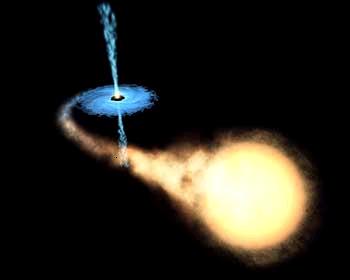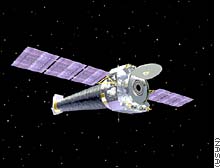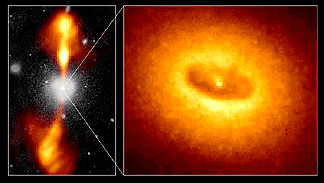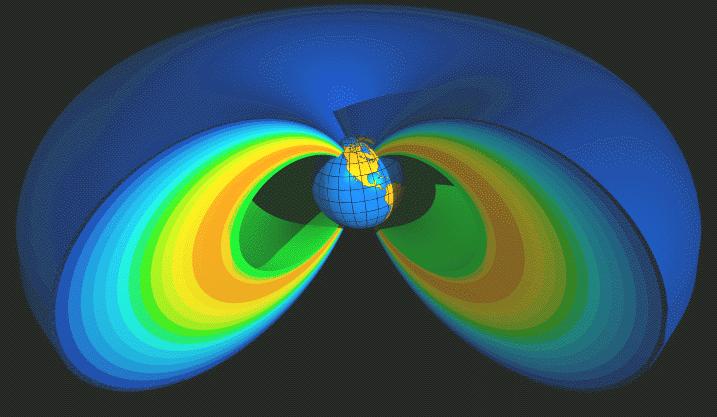Although it may seem impossible to detect Black Holes, scientists today are almost 100% sure they have found them. On first thought, how can you detect anything that does not emit light at all?
Well the first answer to this question is that scientist can see their effects on visible objects around them. This is also one way astronomers first attempt to locate what are known as Black Hole Candidates. They are considered candidates because they are likely cases of Black Holes. Scientist often find such candidates in binary systems. When a visible star is found to be orbiting an unseen partner, scientists may suspect a Black Hole. Astronomers can calculate the mass of the invisible partner according to the visible star's orbit. However, this method of detection is slightly inaccurate. The problem lies in the fact that one can not be sure at what angle we see the star orbiting at. For example, we cannot see if we are completely perpendicular to the orbit (where we could see the entire path of the star) or if it is at some angle (where we might assume a smaller, less massive, partner). This makes the calculation uncertain because there is no way to tell the angle of the orbit.
Another way astronomers look for signs of Black Holes is by observing x-ray bursts. A Black Hole in a binary system will probably pull gases from the visible partner (as seen above right). The Black Hole then pulls these gases into a quickly spinning acretion disk (blue disk). As the gas gets closer and closer to the event horizon, it speeds up. The gases heat up to such a point they begin emitting x-rays. These are emitted outside of the event horizon and can therefore escape. Astronomers believe that lower mass objects (such as neutron stars) would not cause the gas to accelerate enough to begin emitting high-energy (high-frequency) x-rays. Astronomers today have large orbiting x-ray telescopes to detect such bursts.
The third major 'Black Holes Signature' astronomers look for are jets of superheated gases ejected from the 'poles' of Black Holes. These jets have been observed coming from the hearts of quasars, suspected to contain massive Black Holes. These can also be seen in the artist's concept at the top of this page. Black Holes, especially rotating (spinning) Black Holes, are assumed to have strong magnetic fields, similar to the magnetic fields, or magnetosphere, of the Earth. These fields are believed to cause large amounts of hot gases to be shot out from the poles of Black Holes. |






